It’s hard to admit to being lonely. You are giving voice to that deepest of all fears: that you might be unlovable. All of my 31 interviewees were difficult to win over - but these are their raw confessions.
Jean Woods lowers herself into her favourite armchair. At 93, she knows she’s lucky. The bodily pains and insults of her tenth decade are still bearable and she lives – with help – at home. The former soprano reflects on a life filled with music, deep attachments and now, an acute sense of absence. “I used to love being alone, but now there’s too much time alone,” she says, her voice carrying the faintest trace of the arias she once sang at London’s Royal College of Music. “I feel the great weight of loneliness. It’s something very private. I don’t share this with anyone because the one person I would share it with is no longer here.”
Her husband, Don, a GP, passed away 13 years ago, leaving Jean to navigate the days without his companionship, the nights without the sweet warmth of a hip or a foot within reach. “He was good company. I miss him, but I cope, and that’s the end of it,” she says, her tone shifting to one of quiet resilience. Yet she admits to occasional despair. “I have depressing moments when I think ‘Tch, poor old me,’ and then I say very sternly to myself, ‘Oh for goodness sake, shut up.’”
Late afternoons are the hardest. “Always around 4pm – it’s too early to have my gin and tonic, and it’s too late to start any meaningful activity,” she says. Despite this, Jean finds solace in simple pleasures. “Bed. I love being in bed. I snuggle down and feel comfy. Bed is a good place.” She consciously tries to keep positive. “And I’m very thankful I met my beloved,” she adds, her eyes welling. Her story underscores not only the ache of loneliness, but the stoicism required to face it.
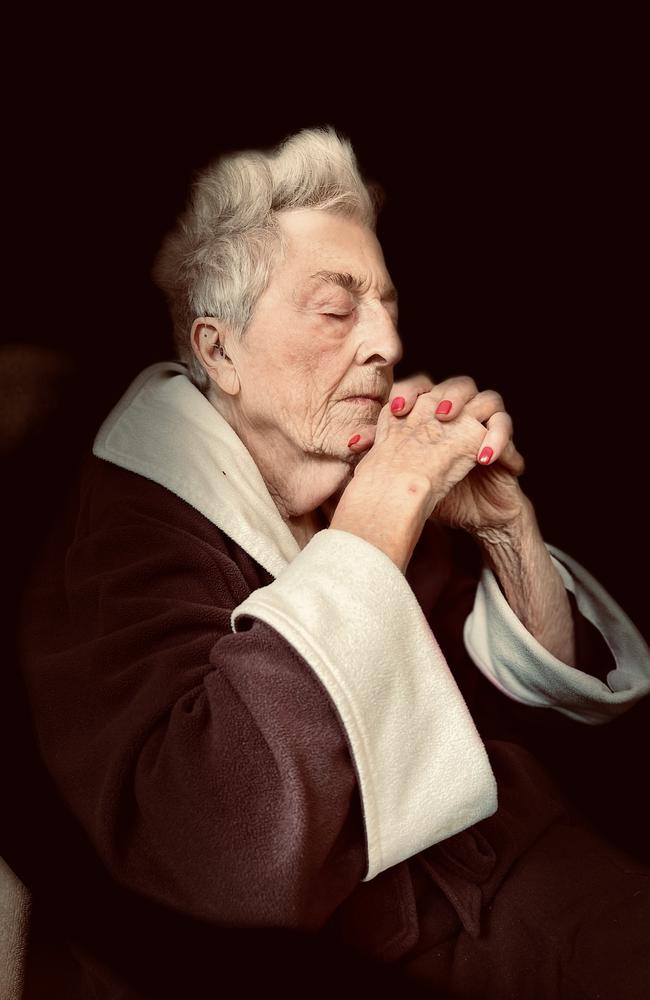
Loneliness has always been a shapeless, slippery part of the human psyche. It’s hard to categorise, and even harder to confess to. Like any troubling emotion, it gets its potency from the conviction that you’re the only one feeling it. Not long after the US Surgeon General declared social isolation an epidemic in 2023, I began interviewing strangers around the world about their experiences of chronic loneliness.
Peter Tokoff, a 60-year-old homeless man in East London, told me he could taste his loneliness. On a train from Denmark to Sweden, a middle-aged woman beside me said: “I feel like my big, busy life has fallen in on itself. My world is so small now.” Then there was Loes in Amsterdam. She worked as a prison guard at a men’s prison in the town of Haarlem. She never married or had children and has lived alone in her 30sqm apartment for 50 years; she’s now in her mid-eighties. “Often she won’t let me in,” a social worker tells me, “but she is curious to meet you ... she’ll tell you she sometimes doesn’t leave her apartment for a month.”
Those who claim they’ve never felt the sharp edges of loneliness on sleepless nights are often perplexed at the subject I have chosen to study. “Why loneliness?” they ask. At first I’d reply, “Well, my writing has always run along a theme of belonging, so I was already intrigued by the subject.” But after a year-long study on loneliness as part of a Churchill Fellowship, I’m inclined to say, “Because everyone is defenceless against something.” Loneliness doesn’t discriminate. I add the fundamental distinction I’ve grasped about loneliness: “Being alone is not the same experience as feeling alone.” Far from being a rare and curious circumstance, loneliness is the universal human experience. I’ve learnt it’s easier to fall prey if you’re an introvert, but that extroverts fall harder. Most people think loneliness is an inevitable consequence of ageing – that long slide that becomes a white-knuckled plunge into frailty, dependence and irrelevance. But often the worst time to be socially alienated is when we’re young. A lone shop girl I got talking to in Amsterdam described her loneliness as like a hunger: “The longer it goes on, the more desperate I get. I’m a foreigner in a country that doesn’t much like foreigners. I’m so starved of company I’d do just about anything to make a friend. Even the wrong friend.”
It’s hard to admit to being lonely. You are giving voice to that deepest of all fears: that you might be unlovable. Some kind of social failure. A misfit. All of my 31 interviewees were difficult to win over. Their raw confessions swung between vivid despair and quiet hope, frustration, embarrassment and a profound sadness that loneliness is still something to be ashamed of.
In New York, 70-year-old Paul Rosenfeld was sunning himself on a park bench and reached for my hand as I walked by. “Don’t I know you?” he lied. “Come sit by me.” He was shirtless, and so scraggy and sun-damaged I could see his skeleton through his copper-plated tan. People stared as I joined him on the bench. We talked about this and that before I asked him, “Why do you sit on the street?” He pointed overhead to his fourth-floor flat: “It’s so lonely up there. I just want to talk to people. Sometimes they talk back. Mostly they don’t. But that’s OK. You gotta be careful not to get left out of life once you’re 70. Nobody pays you any attention.”

We talked about his work, his divorce, the grown children who’d drifted away: “People think when you’re old you’ve got nothing to offer. But I know important things. I can look at a pretty girl and see the old woman she will become. Sometimes I can look at an old woman and see the pretty girl she used to be. But being lonely is like dying, only slower. My last remaining friends are waiting to die. They’re crushing up their anti-depressants and sprinkling them on their grapefruit like sugar, hoping to end it. I tell ’em they’re pathetic: ‘Get out and live some more,’ I say. ‘Anyhow, grapefruit tastes like bitter disappointment.’” We laugh. I tell him how pleased I am to have met him. He squeezes my hand and says, “Nobody should be this happy on a Thursday.”
Loneliness, I’ve discovered, is usually circumstantial. The person who once watched your back, or took your side, has withdrawn from your life. Children or friends have moved across town – or across the country. There is no take-for-granted solidarity if a spouse dies, or walks out of a marriage. You’ve lost your job, your house, your health, or gained a divorce, a disability, a mood disorder.
Loneliness manifests in each of us according to our character. Our individual needs for intimacy, affection and connection vary by degrees. Left to its own devices, loneliness will invade the space adjacent to depression – not quite as consuming, but with all the familiar footholds. Our need for connection is so vital that social isolation plunges the body into a state of emergency, driving up cortisol and adrenaline. Our blood pressure rises, we don’t sleep. We become fearful, hyper-vigilant, self-obsessed. Easily offended, we bristle at offers of help, which drives away the very people willing to support us. Feeling invisible, we become afraid of the very thing we need most: meaningful connection with other people. We grow terrified of being conspicuous, so feel safer at home, becoming rigidly attached to our routines – keeping a tidy house, never having dirty laundry. Or we do the opposite and become garrulous and long-winded at any opportunity for casual conversation. Our listener tires quickly of the one-way stream, pleads an excuse and escapes, never to return. To inoculate yourself against loneliness, the temptation is to talk and talk, but the true antidote is to listen.
The chronically lonely show up to hospital sicker and stay longer. They are more at risk of cardiovascular disease, personality disorders, psychosis, dementia and suicide. A 2023 Harvard study found the socially isolated are 40 per cent more likely to experience an early death. In the Dutch town of Delft, a 55-year-old woman told me: “I should have recognised I was in trouble long before I found myself lying on my living room floor each night after work. I’d just lie on the carpet and stare at the ceiling for hours, paralysed. Last year, I had a heart attack. I’m sure my stress about being so alone was one of the causes.”
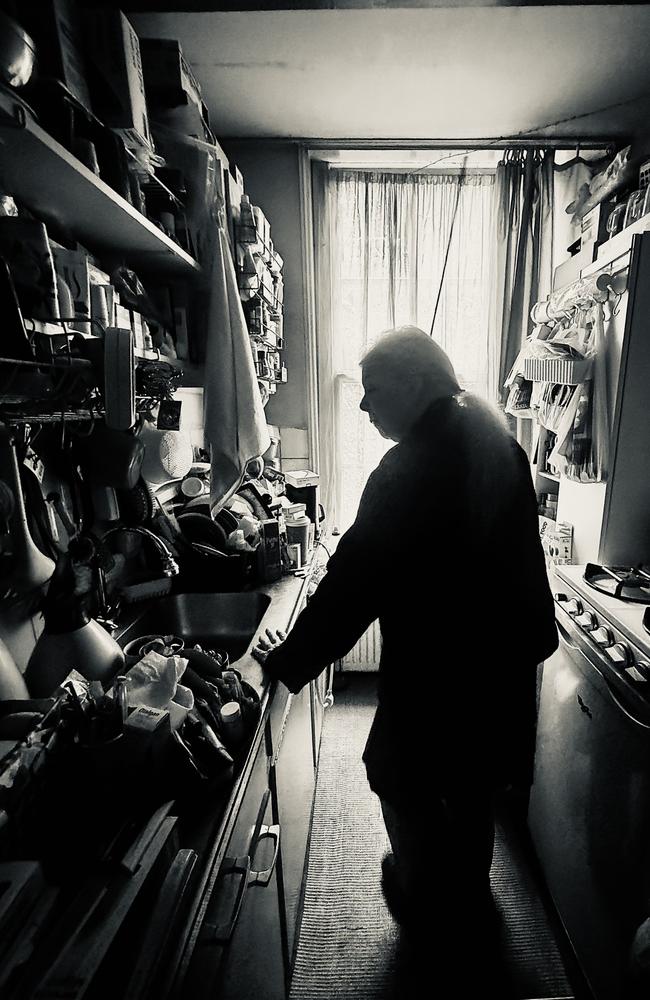
My research began as the kernel of a theory: if everyone of us knows what loneliness feels like, then why can’t we talk openly about it in the same way we now talk openly about our mental health? Because whatever you might be experiencing, you’re not alone. Everyone is frightened of being left behind. A 63-year-old ship’s captain admitted to me: “You have to be careful to keep a hold on your thoughts or you go down the rabbit hole of despair. I swear that hole gets deeper every time. I think my loneliness is a product of looking at myself and wondering if I’m worthy of love.”
I also wanted to find those rare types who were contentedly alone, relishing the quiet delights of solitude. From them, I learnt that you can be lonely in a marriage, lonely in a crowd, or blissfully content in a cabin on a hilltop. I grew to think of them as “survivors of loneliness”. These people have a lot to teach us. In England’s West Country, a 93-year-old snooker coach urged me to always be a friend rather than have a friend. “Am I lonely?” he said. “No. But I have moments when I don’t have the company I want and then I do something about it. I’ll ring someone up or call in and say hullo. Loneliness is just a measurement. If you have all you require seven days a week, then you’re never lonely, are you? But if you need friends, then you’re gonna have an issue with loneliness.” His advice will stay with me throughout my days.
The “un-lonely alone” have often found ways to compensate for their social shortfall. In Perth, two neighbours who start every day together with a dawn walk and coffee explained it this way: “We’ve lived in the same street since 1979 with one house between us. My hour with Helen each morning is enough to fulfil my social quotient for the day. We both love our own company and I don’t think we’ve ever really been lonely. But I know an avid interest in community creates a sense of belonging. We go to the coffee shop and see all the familiar faces, catch up on what’s happening, a bit of back and forth and there it is – a little recipe for happiness. At 81, my social life is still expanding.”
I wonder if I haven’t been studying loneliness my whole life. As a fatherless kid from a broken family, my single working mother surrounded herself with friends, but her only child spent most of her time alone. When I was six, we moved into a block of flats overlooking a freeway. I remember stringing a makeshift sign outside our fifth-floor window, hoping people driving below would look up. “Hello!” my sign said. “Wave to me if you see this.” It wasn’t until I had my own kids that it dawned on me the theme of my game was isolation.
In my early twenties, after landing an exciting TV job in Sydney, I bounced onto a plane and left everything and everyone I knew behind. Home became a bedsit in an unfamiliar city. Work colleagues were indifferent to the new girl. On weekends, traipsing around my new suburbia for hours on end, I became a lonely observer of other peoples’ happiness. In streetside cafes, I was the solitary figure contemplating the parade of couples and families. It seemed everyone but me was taking the comforts of belonging for granted.
I look back now on those five years in Sydney with a peculiar mixture of pride and relief. I’m heartened my long-ago self beat her loneliness into submission. I’m still grateful for those workmates who allowed me to convert them into friends. But I’ve never forgotten how miserable it felt to be an outsider.
For me, the most troubling aspect of the seismic shift towards online connection is this: has the 21st-century explosion in anxiety and depression produced an epidemic of loneliness? Or has the explosion in loneliness produced an epidemic of anxiety and depression? We are being fed the idea that all troubling emotions – depression, anxiety, loneliness, rage – are simply a consequence of unsettled chemistry.
My research has shown me that we should be thinking of loneliness as the warning light reminding us that we are alive but not thriving. Loneliness is the emotion that begs for fundamental change, urging us to rekindle our friendships and restore our connections to community. The reward? The comfort of feeling securely attached to the herd.
Overwhelmed by the eruption in mental health problems, doctors are beginning to look for the symptoms of isolation in patients and trying to address them with “social” prescriptions rather than medical ones. But social prescribing is still a relatively new field, because loneliness is a relatively new malady.
Before 1900, according to the best longitudinal demographic studies, only 5 per cent of households consisted of just one person. In Australia, the latest Census tells us that figure is now almost 26 per cent. The term “loneliness” originated from “oneliness”, which simply referred to the condition of being alone; it was rarely used in the negative sense. In the early 19th century, solitude was prized by the Romantic poets who revelled in their contemplations of man in nature. Wordsworth “wandered lonely as a cloud”; Rousseau enjoyed the “reveries of a solitary walker”.
In the 1960s, single-person households grew at an exponential rate, driven by the introduction of no-fault divorce, a fall in birth rates and longer lifespans. With the nuclear family almost ubiquitous, the elderly began to reside alone, with women typically outliving their husbands. Leaps in communication technology gave those living alone the badge of “admirable independence”.
New medical literature on loneliness began to emerge in the 1980s, spearheaded by John T. Cacioppo, a US neuroscientist who specialised in the intersect between biology and psychology. He became convinced that the human need for social connection was so fundamental that without it we fall apart, down to the cellular level. “Chronic loneliness increases the odds of an early death as much as being obese,” he wrote, “though obesity does not make you as miserable as loneliness.” Cacioppo was publishing his findings just as the first engineers were building a network of computers to connect us all. His research over 21 years poses some of the fundamental questions we are yet to definitively answer: is the success of social media the product of an explosion in loneliness? A contributor to it? Or the remedy for it?
“No matter what social species you’re talking about, all the way down to fruit flies, if you isolate them they die earlier,” Cacioppo reported. “But some people do not feel strong pain by disconnection. That makes great sense, because those are the explorers. We need them. For those who feel warmer near the communal fire, isolation works as a civilising influence. It gives you the capacity to shape better social members of your species.”
In 2010, just three years after the launch of the first iPhone, something catastrophic began happening to teens’ mental health. Rates of depression and anxiety went into hyperdrive. Why? It’s surely no coincidence that the staggering popularity of Snapchat and Instagram coincided with a marked decrease in adolescent sleep and the time they spent with friends – two factors linked to poor mental health.
Before the smartphone era, the mental health of teens across the Western world had been more or less stable since the 1980s. In fact by the turn of the century, under-age alcohol use was finally trending downwards, as were teen pregnancy rates and child poverty. But when Gen Z – born after 1996 and reaching puberty in 2012 – enters these data sets, rates of anxiety and depression begin to soar.
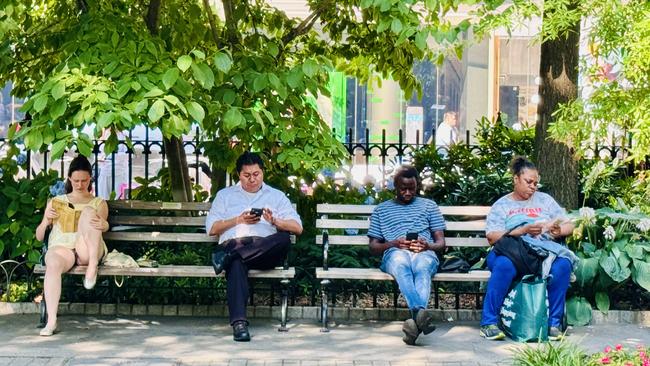
In the US, the youth suicide rate has doubled in the past decade. Emergency room admissions for self-harm in girls aged 10-14 has quadrupled. In 2021 alone, one in five US teens was diagnosed with depression. Adolescents are in a mental health crisis, and the current generation of teens are on track to become the loneliest generation in human history. Why aren’t we talking more about this?
Social media encourages aloneness: hours of scrolling is usually a solitary pastime. And social isolation leads to ingrained behaviours that lead to greater alienation. We know loneliness inhibits our executive functioning. Getting out of the house becomes an insurmountable obstacle. Your system complains. It’s easier to stay cocooned on the sofa with TikTok for company. Making plans to meet up with someone new is uncomfortable. Getting dressed to go out to dinner is a hassle. Breaking out of this cycle requires willpower, optimism and stamina – the very things your brain is drained of by the addictive, passive entertainment provided by the likes of Snapchat and Instagram.
Across multiple age groups, we are in a friendship recession. In the UK, a study in 2021 found that one in five men couldn’t name a single friend. A third said that in an emergency, there’d be no one they’d feel comfortable to call. Similarly, US data shows Americans were spending, on average, six hours a week with friends in 2013. By 2019, it was four hours. By 2021, it was less than three hours – a drop of 58 per cent in just eight years. And yet, the very thing we need more of is relationships.
So what is the future for loneliness? Over the past year I’ve begun to realise that the opposite of loneliness is not togetherness – it’s intimacy. And we are all more than capable of finding intimacy in the increasingly digital landscapes of our lives. The treatment for loneliness is not to force people together and demand that they socialise. It does not work to foist “support” on the lonely and then expect them to be grateful. We must normalise loneliness as a universal human experience. Social media, with its obsession with perfection, refuses to acknowledge that we’re all dysfunctional in some way. And loneliness is just a label in that vast collection of human dysfunctions. If a cultural shift would make it easier for people who are struggling to feel accepted, maybe we could create a society that’s more inclusive of more types of people.
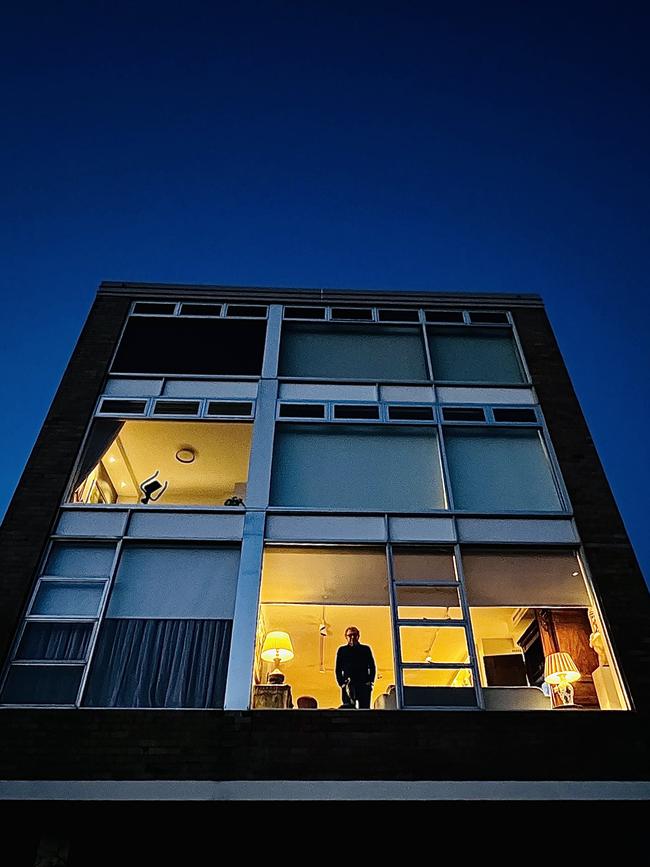
For my money, the key to beating loneliness is creating social resilience: communities with in-built structures that foster social wellbeing; neighbourhoods that find openings for the lonely to help others. Feeling needed is the fast-track back to connection. But the lonely themselves must be proactive too – it takes guts to muzzle your fears and seek out new ways to do the things you love, or to goad yourself into saying an enthusiastic “yes” to a new social opportunity. Baby steps are vital here: make small talk with someone in the park; strike up a conversation with the person in the supermarket queue. Volunteer at your favourite bookshop, garden centre, sporting club. Group activities can be a highly effective treatment: join a walking group, a painting class, a bird-watching expedition. You’ll be strangers at first but your shared passion will provide an easy channel for communication. The good news is that it doesn’t take a village to fight loneliness. It takes just one friend to feel less isolated.
And if what I’m saying is true – if loneliness is a psychological warning that our world is in jeopardy – then it should also encourage us to build better neighbourhoods, suburbs, towns and cities. The most daring thing we can do is create stable, compassionate and generous communities in which the terrible affliction of loneliness can be cured. In the end, the connections between us are all that matters.

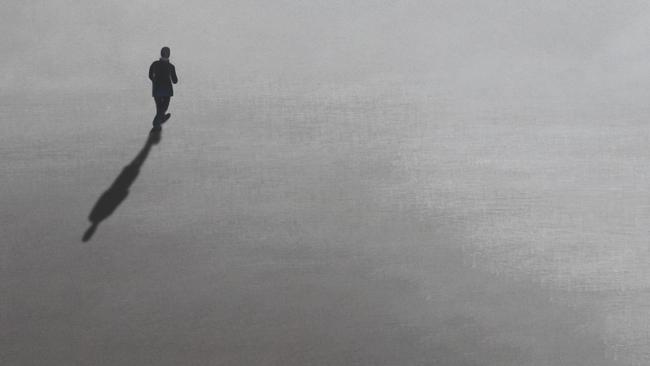
More Coverage
Add your comment to this story
To join the conversation, please log in. Don't have an account? Register
Join the conversation, you are commenting as Logout